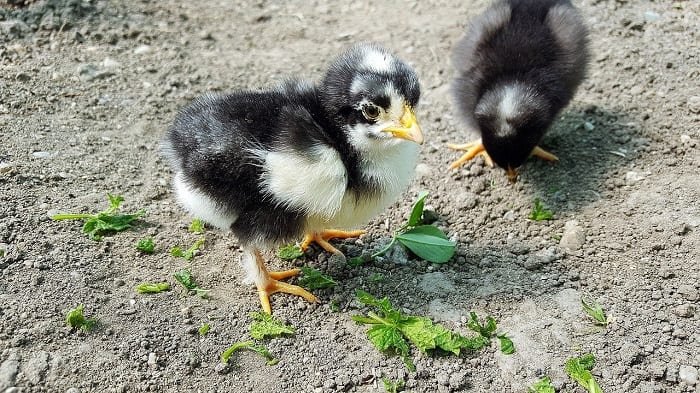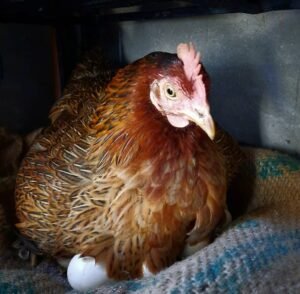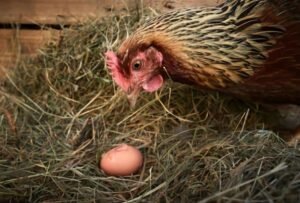How To Care For Day-Old Chicks

Are you wondering how best to care for day-old chicks to prevent them from dying?
You will agree with me that raising day-old chicks can be a herculean task.
However, it’s delightful when everything turns outright.
But getting this phase wrong could mean a lot of loss!!!
So, how do you avert that massive loss?
Most farmers would rather go for pullet chickens.
But that doesn’t solve the issue.
To avert the losses, first, you have to give the chicks optimum care and attention.
Below you will find all you need to know on how to care for day-old chicks.
By learning this, you will not only reduce the rate of poultry mortality on your farm, but you will also get to increase your income.
Also, by doing this right you’ll have more success and fewer surprises.
What is a day-old chick?
Contrary to what the name “day-old chick” literally means, a day-old chick is not one day old.
When you consider a day-old chick, we refer to a chick that is up to 72 hours old.
This does not mean a chick that is just one day old cannot be called a day-old chick.
On the contrary, all chickens between 0-72 hours of age are day-old chicks.

Where do day old chicks come from?
Usually, day-old chicks come from the hatchery.
Some poultry farmers majorly base on incubating and hatching eggs for sale as chicks.
What this means is that most poultry farmers buy the necessary poultry farm equipment to major on hatching chicks for sale.
It’s advised you purchase chicks from a reliable hatchery.
Also, ensure the hatchery is nearby so that the chicks will not suffocate before they get to the farm.
But on the other hand, some hatcheries carry out interstate delivery using the right packages.
So, if you’re wondering if day-old chicks fall from the sky, the answer is “No”.
You can actually get them from reliable hatcheries near you.
What should I do before bringing day-old chicks to the farm?
Before you bring day-old chicks to the farm, certain conditions and equipment have to be in place to welcome these little buddies.
In other words, you have to prepare the farm for the arrival of these chicks from the hatchery.
Here’s what you should do ready the farm;
1. Ensure you have a brooder:
Remember, these chicks are coming straight up from the incubator or a brooder.
And once they get to the farm, they need to be housed in a similar background until they become pullets.
The brooder provides adequate temperature, shelter and protection to the chicks for their first few weeks of age.
2. Set up the brooder:
Having a brooder is not enough, setting it up appropriately is what makes it more efficient for the process.
Here’s how to ready it for use;
- Ensure the brooder is dry, clean and safe.
- We recommend a brooder of at least 4 inches per litter.
- Furthermore, set the temperature to about 95°F for the first week. However as the weeks go by, reduce the temperature rate by 5° Fahrenheit per week.
With these sets, your journey to welcoming and caring for your day-old chicks.
3. Make provision for warm water and food:
Before bringing the day-old chicks into the farm, ensure you have water.
The water should be at room temperature so it won’t chill the chicks.
And concerning the food, a starter mash is best.
Refer to our article on what do chickens eat and what to feed chickens to make them lay eggs for more details.
4. Get farm poultry equipment for chicks:
Raising a chick with farm equipment for layers or more matured birds will make the task more unbearable.
That’s why we recommend you get smaller sized equipment for the chicks.
For instance, get chick-sized feeders or drinkers. This will prevent the chicks from drowning.
Also, you need to get bedding appropriate for baby chicks.
Just ensure you have all the required supplies before the chicks arrive.
5. Ready the appropriate medication and vaccination:
Sad news!
Chicks have a high mortality rate.
In our article on how to reduce poultry mortality and make more profits, we x-rayed how you can avoid that.
However, before bringing your chicks to the farm, make sure you get the necessary vaccinations that day-old chicks require to fight against viruses and bacterial infections.
Kindly note that the kind of vaccine will differ from various countries and cities in Africa.
So, we recommend you speak to a vet to prescribe the necessary vaccines and their dosage.
With this, you are set to welcome and care for your day-old chicks adequately.
Now, let’s find out how to care for your day-old chicks adequately until they mature for eggs or eat.

How to care for day-old chicks until maturity:
Now, this is where the task begins.
A chick surviving the chick phase partially signifies that the pullet and egg-laying stage will be an easy ride all things being equal.
So, here is a guide that will enlighten you on how to care for your day-old chicks until they mature.
For clarity, we have split this process into stages to help you know what to do at each given time.
Days 1-2
Prevent the chicks from getting chilled by setting the pen temperature adequately.
In other words, ensure they are warm enough.
Ensure you check on the baby chicks several times in a day.
At night, ensure all the chicks make it back under the brooder.
Also, leave the lights on all night.
This will provide illumination for the baby chicks to see to eat and drink.
Keep your eye open for sick or dead birds. Ensure they are taken away from the environment to avoid scare and smell.
However, keep in mind that high mortality of chicks occurs within the first 48 hours.
But if the chicks make it out during this period, the death rate will cease, or almost cease.
Kindly note that this is not time to put the day-old chicks on a day/night cycle.
Days 3-4
Caring for your day-old chicks is taking shape.
From day 3, you can check up on them at least twice per day.
Ensure you do not drag the birds into a new routine suddenly. This can cause stress and death.
At this point, you should expand the draft guard to give the chicks more space.
Add larger feeders (15 lb), use 8ft of chick trough per 100 chicks (two 4ft troughs, four 2ft troughs, or eight 1ft troughs).
Furthermore, add larger waterers (1 gallon per 50 chicks).
Automatic waterers can serve best if you can afford them.
Each water set should be set in a way the chicks have to stretch a little to get the water.
Also, you can discontinue all-night lights after three nights.

Days 5-10
On day 5, expand the draft guard again if the chicks are getting past it.
Next is to remove the quart-jar waterers gradually.
Do this until only the large-capacity or automatic waterers remain.
Ensure you remove the first feeders gradually.
Replace them with trough or tube feeders.
If you’re using overhead heat-lamp brooders, raise them a couple of inches higher at this stage.
However, if you’re using insulated heat lamp brooders, reduce the wattage.
For thermostatically controlled brooders, turn it down by 5°F.
You’re likely not to experience chick mortality at this point.
Day 10-14
For the remainder of the second week, double the amount of feeder space.
Your chicks are becoming pullets. Therefore, you should replace the trough feeders with ones designed for larger chicks.
Ensure you pay attention to litter quality.
You have to increase the ventilation a little at a time.
At the end of the second week: Day 14 precisely, turn down the thermostat another five degrees.
Then raise the overhead infrared heaters two inches, or the insulated heat-lamp an inch or two.
Week 3
At this point, your growing day-old chicks need practice perches, except for the broilers.
Increase the ventilation some more while you turn down the thermostat and raise the brooder higher on the other hand.
Weeks 4-5
If you have successfully cared for the chicks to this point you need a thumbs up.
This is basically the last weeks of the brooding period.
Therefore, depending on the weather, they may no longer need brooder heat.
For the broilers, this may last till after two weeks.
The Leghorns require this after three, and other breeds after four.
Provide more space and larger feeders.
At this point, your chicks are mature and ready to lay eggs.
Find out how many eggs a chicken lays in a week, when chickens start laying eggs regularly and some common reasons why your chickens are not laying eggs yet.
What should you not do with baby chicks?
Do not feed on them.
Their bones and flesh are probably brittle and inconsiderate for feeding.
Also, do not use baby chicks as food for the older chickens.
Conclusion
Now you see that caring for your day-old chicks is not a herculean task as you thought.
If you follow the steps we have outlined above, it’s going to be easy-breezy!!!
Tell us how you took care of your day-old chicks in the comment session.
Frequently asked questions about day-old chicks
How often should baby chicks be fed?
There is no stipulation on how much the baby chicks should feed.
However, what’s important is what you feed the chicks.
A medicated starter mash is the best at this stage.
You can also add “treats” such as bugs, worms, grapes, etc.
However, as they grow, fermented chicken feed or organic chicken feeds are recommended to help them grow well and plumpy.
How long do baby chicks need heat?
Basically, your day-old chicks will need heat till they are fully feathered.
Hence the reason they should be kept in a brooding area that is 95°F.
Here’s the recommended temperature rate for the baby chicks till they mature.
| Week | Temperature in Fahrenheit |
| 1 | 95 |
| 2 | 90 |
| 3 | 85 |
| 4 | 80 |
| 5 | 75 |
| 6 | 70 |
Each week you will need to reduce the temperature of the brooder to 5°F until the youngsters are feathered out.
At what age can Chicks go without heat lamps?
Basically, when the chicks get to 4 to 5 weeks of age, they no longer need heat.
Therefore, heat lamps are totally no longer necessary.
How do you know that?
First, the chicks start staying far away from the heat lamp.
Secondly, you will notice the growing chicks constantly panting.
This tells you that the temperature is too warm for them. Raise the heat lamp or switch to a lower watt bulb.
If this persists, they no longer need heat.
Once the heat is no longer needed, the chicks can be moved outdoors if you have a yard or allow free range.
What happens if baby chicks get too cold?
The fact is chicks are still tender and even a slight cold can kill them.
Most poultry keepers do not even know when their baby chicks get cold.
When you notice the baby chicks piling on top of each other under the heat lamp, they are too cold.
And when the day-old chicks get cold, they reach out for the heat lamp.
This struggle will lead to
Overcrowding around the heat lamp.
Secondly, the chicks will tend to climb on top of each other which leads to scratches from their legs.
Worst case scenario, this leads to death.
To avoid this, lower the lamp.
Also, we recommend the use of a warmer bulb because incandescent bulbs may not be enough.
You can also add another heat lamp to the brooder.
Can you brood day-old chicks with older chickens?
Yes, you can.
But we do not recommend that.
The reason is that the older chickens can perk your baby chicks to death.
Chickens like Rhode Island Red tend towards cannibalism.
And since chicks are helpless, they get the end of their aggressive and bullying nature.
However, Cochin Chickens can take these ones in and raise them as theirs.
Depending on your older breed it can be a good idea.
But on a large scale, we do not recommend brooding day-old chicks with older chickens.
How can you tell how old baby chicks are?
It could be hard to tell how old your day-old chicks are just by looking at them.
However, by some tricks, you can be able to classify if they are chicks, pullets or hens.
Here are the factors that will aid you to decipher how old your chickens are;
- Vent
- Legs
- Body Size
- Plumage
- Behaviour
- Comb and Wattles
By looking at these features of a bird, you can classify them effectively.
However, for the chicks at week 4 or 5, their fluffy appearance slowly disappears.
They can now be called pullets no longer day-old or baby chicks.
What is the space requirement for day-old chicks?
To construct a simple roost with the appropriate space requirements for day-old chicks, we recommend 4” square x 1” thick boards, then drill a 1″ round hole in each, and insert a 1″ round dowel between the boards.
This will be convenient for each chick.
Set this roost in the brooder.
References
- 12 Best Chicken breeds for Eggs – chicken breeds for eggs
- When Do Chickens Start Laying Eggs Regularly?
- How Many Eggs Does A Chicken Lay In A Week?
- Fermenting chicken feed – The definitive guide
- 10 Sure Ways To Stop Chickens from Eating Their Eggs [+Bonus]
- 6 Best Chicken Egg Incubators for Chicken Eggs and Other Birds









![11 Heritage Turkey Breeds [With Pictures]](https://agro4africa.com/wp-content/uploads/2021/08/Bourbon-Red-Turkey_1-e1640285809670.jpg)

